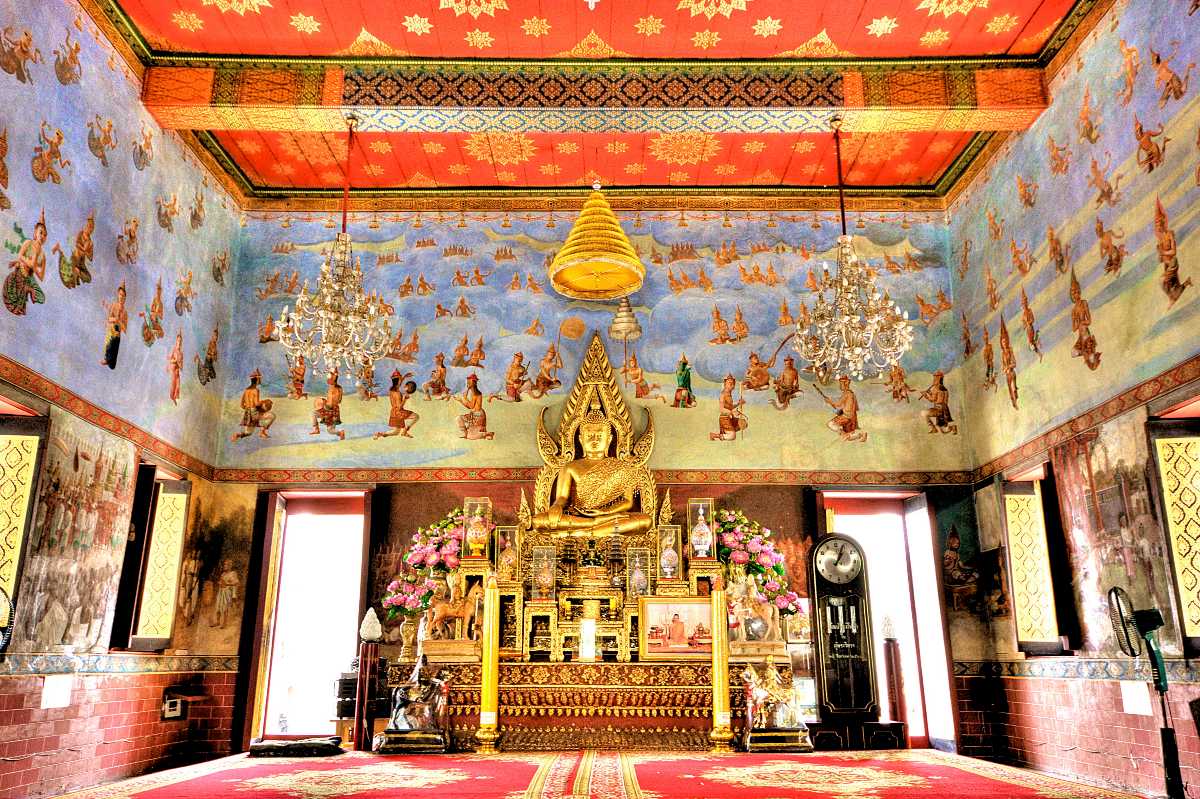Wat Suwandararam
Tags : Buddhist Temple
Timings : 8:00 AM - 6:00 PM
Time Required : 1-2 hours
Entry Fee : No Entry Fee
Wat Suwandararam, Ayutthaya Overview
Wat Suwandararam, the 'Temple of the Golden Star', is one of the surviving ancient temples in the UNESCO recognized World Heritage Site, Ayutthaya. Famed for its exquisite mural paintings, magnificent architecture and grandeur, the temple has served as an important symbol of legitimacy for the rulers of the Chakri dynasty. It continues to be revered by generations of Thai nationals, civilians and royals alike.
All those wishing to learn about the exploits and heroic deeds of the Thai royals through the gorgeous murals won’t be disappointed while visiting Wat Suwan Dararam. The recent renovations of the temple have added a mystical touch to the structure. With its elaborate murals and grand architecture, the Wat Suwadararam is a visual delight to history and art buffs alike. The complex boasts of a complicated and textured history, that has survived generations of neglect and attempts at subordination. If you wish to discover Siam in a new light, don’t forget to make your way to this particular temple complex.
Read More on Wat Suwandararam
Architecture of Wat Suwandararam
Built in the late Ayutthaya style, two important structures of Wat Suwan Dararam are the ubosot (the ordination hall) and vihara. The ubosot is situated on a boat-like foundation. Its gable resembles God Vishnu sitting on his mount, Garuda. Commissioned by Rama II, the ubosot houses some of the most exquisite mural paintings at the site of Ayutthaya. The murals, covering most of the ubosot’s interior, were sponsored by Rama III. These are largely based on the following three themes: Traiphum (three worlds, including heaven, Mt. Meru and hell), Jataka tales and Buddha’s defeat of Mara and his demonic army. Vessantara Jataka, which has stories of animals, anthropomorphic and mythological figures, occupies the entirety of the south wall, pointing to the popularity of the tale in pre-modern and modern Thailand.

The wihan or vihara was built in the reign of Rama II and is also intricately decorated with murals. Notable here is the mural depicting the legendary battling scene of King Naresuan the Great, mounted atop an elephant, and the Burmese. Furthermore, we also find paintings of Portuguese mercenaries. The Wat Suwamdararam temple complex also has a belfry in the Western style, made from bricks and cement. Other structures include the sleeping quarters for the monks, chedis, bell tower and an elaborate Chinese memorial site. Certainly, the temple complex is a maze waiting to be explored!
History and Significance of Wat Suwan Dararam
_20190401193718.jpg)
Source
Wat Suwamdararam has always held a strategic position, located as it is at the confluence of the rivers Pa Sak and Chao Phraya. Initially named Wat Thong or 'Golden Temple', the temple was constructed by the then Royal Secretary of Northern Thailand and Keeper of the Royal Seal, Thongdee, in the late Ayutthaya period. It was later attacked and ransacked by the Burmese army during the sack of Ayutthaya city in 1767.
A couple of years later, when King Rama I ascended the throne, the temple was renamed as Wat Suwan Dararam and restored by the king. The temple was, therefore, significant due to its links with the foundation of the Chakri Dynasty. The importance is reflected in the succeeding restorations made by rulers of the Chakri Dynasty. The murals, later and most prominent additions to the wat were designed and painted by Phraya Anusas Jitrakorn, during the reign of Rama VII.
Tips
-
It is an active temple, so be conscious of the attire you choose to wear. Make sure that the shoulders and knees are covered, and the top isn’t see-through.
-
If you wish to have a quick bite, before visiting the temple, make your way to Kuey Taew Pak Wan. The restaurant is significantly crowded during lunchtime, so plan your itinerary accordingly.
- The best time to visit Wat Suwan Dararam is during the weekdays, especially since you will be able to avoid the weekend crowd coming in from nearby cities. Early morning visits are advised if you wish to avoid crowds.
